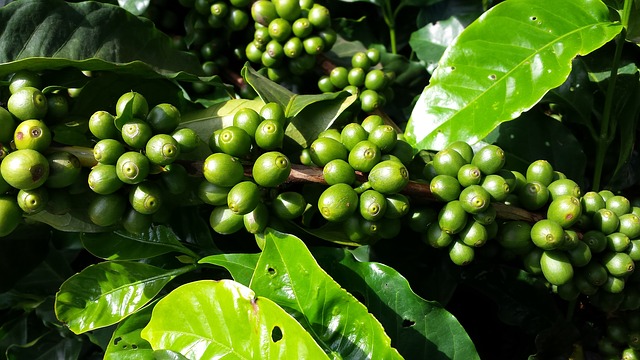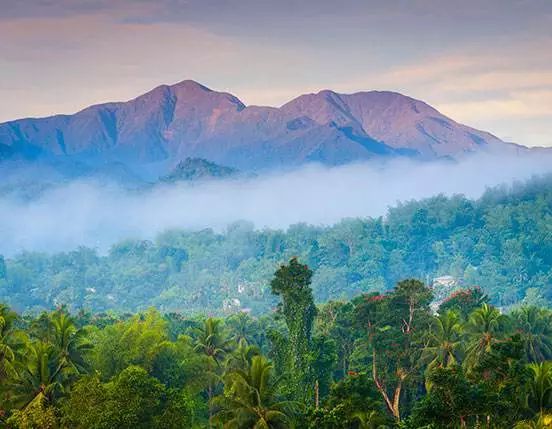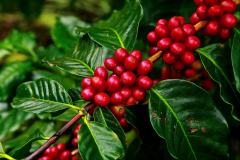Ethiopia Coffee Origin Information Profile_The World's Most Popular Coffee Origin

Professional coffee knowledge exchange more coffee bean information please follow the coffee workshop (Wechat official account cafe_style)
Ethiopia is the birthplace of Arabica coffee, and in the tenth century, Ethiopians nomadic in the mountains were probably the first to recognize the irritating effects of coffee, although they ate red ripe fruit directly, not as a drink, and Ethiopians have been drinking coffee longer than anyone else. Coffee is a national drink for them, and more than 50% of the country's production is consumed internally. In southern and southwestern Ethiopia, wild coffee trees are still covered by forests and grow under the shelter of forests. There are natural differences among the coffee trees that grow, making them a unique treasure house for selection and reproduction around the world. Sufi worshippers of Islam spread their coffee throughout the Middle East, from the Middle East to Europe, and then to the colonies of the entire empire, including Indonesia and the United States. Ethiopian coffee is one of the most popular coffee origins in the world.
Ethiopia is in sub-Saharan Africa, bordering on the west of Sudan, Somalia and Djibouti to the east, Kenya to the south, and northeast of Eritrea, and the Ethiopian country still retains several high-altitude rainforest mountains.
About 25 per cent of Ethiopia's population is engaged in work related to coffee production, while the above figures represent more than 50 per cent of Ethiopia's gross domestic product (GDP). Ethiopia has a population of almost 75 million people, many of whom strive to make a living by producing and exporting major goods. 64% of people do not have access to a clean and safe water supply system. 50% of the population lives in economic poverty. Most communities do not have electricity.
Arabica coffee, or jasminum arabicum laurifolia (Arabian plant of the genus Jasminum in the family Lauraceae, originally known as coffee), always grows naturally in the forests of the southwestern highlands of the Kaffa and Buno regions. The total area of integrated cultivation of Arabica coffee and other species in Ethiopia is about 400000 hectares. Total coffee production is about 200000 metric tons of washed beans per year, which directly or indirectly affects the livelihoods of more than 15 million people in the city. Ethiopia's economy is based on farming. Agricultural activities currently account for 45% of GDP, 85% of the employed population and 90% of foreign exchange earnings.
Coffee is still wild in the mountains of Ethiopia. Ethiopian farmers cultivate coffee in four different systems, including forest coffee, semi-forest coffee, garden coffee and farm coffee. About 98% of Ethiopia's coffee comes from small farms of small farmers, which is the country's most important export. Ethiopia is the third largest coffee producer in Africa. There are about 700000 coffee sharecroppers in Ethiopia, 54 per cent of whom are in semi-forest areas. Coffee has become part of their local cultural tradition and has been passed on for more than ten generations.
In 2003, coffee prices plummeted to their lowest level in the history of Ethiopian coffee makers. At such prices, farmers soon could not afford the cost of production, and since then many problems have followed. Many producers abandon their farms in the Kaffa and Oromia areas and move to cities; the rest of the farm operators switch to runways to grow non-coffee crops. As a result, farmers' income has plummeted, and their families often cannot afford to buy basic material necessities such as clothes, food and medicine, as well as building materials to repair their houses, to pay for important social and religious ceremonies, and the education of their children. Despite all the difficulties, most Ethiopian farmers are still committed to coffee farming.
From the southwest to the south and east, coffee ripens and grows over a wide area. Two of them are obviously the most well-known and recognized, Harrar for the east and Sidamo for the south. Among the coffee produced in these areas, there may be no other producing area that can compare with it in terms of what is special.
Harrar coffee is made by natural processing (dry processing) and provides a better taste analysis for the Middle East: moderately wine-flavored acid, even wild, with an euphemism that the fruit flavor has the sour taste of fermented fruit. This coffee often uses cardamom fruit and other raw ingredients for its "increment" in the Middle East. Production has always been very limited, and the demand in the center of the Middle East is very large, so the price of Harrar remains high.
In Sidamo in the south, on the other hand, it is very specialized and unique in the washing of beans by wet treatment. The coffee here is delicate and delicious and has a unique floral aroma. In the Sidamo area, the valley town of Yirgacheffe lies on its back. Coffee from the slopes on the edge of the valley can best explain the unique flavor of Ethiopian coffee. No other coffee in the world has such strong aromas, sweetness, lemon and apricot aromas. It was cherished by coffee mixers after it began to grow coffee at the end of World War II.
END
Important Notice :
前街咖啡 FrontStreet Coffee has moved to new addredd:
FrontStreet Coffee Address: 315,Donghua East Road,GuangZhou
Tel:020 38364473
- Prev

The Blue Mountains of Cuba? The Blue Mountains of Haiti? What other knockoffs do you have for Jamaican Blue Mountain coffee beans?
Professional coffee knowledge exchange more coffee bean information please follow the coffee workshop (Wechat official account cafe_style) holy name Blue Mountain (Blue Mountain) several times someone asked about Cuba Blue Mountain Coffee, Haiti Blue Mountain Coffee. When I first heard the Blue Mountain Coffee in Cuba, I really had the feeling of Zhanger King Kong. What were you talking about? I can't hear you at all. Later, more and more people want to know about Haitian blue.
- Next

A list of Colombian Coffee producing areas _ what are the characteristics of Colombian Coffee planting quality
For more information on coffee beans, please follow Coffee Workshop (Wechat official account cafe_style) Colombian Coffee from the Andes No one can specify when it was introduced to Colombia, some think it came along with priests of the Jesuit Church in the 17th century. Colombian coffee has always been regarded as the highest quality in the world.
Related
- Detailed explanation of Jadeite planting Land in Panamanian Jadeite Manor introduction to the grading system of Jadeite competitive bidding, Red bid, Green bid and Rose Summer
- Story of Coffee planting in Brenka region of Costa Rica Stonehenge Manor anaerobic heavy honey treatment of flavor mouth
- What's on the barrel of Blue Mountain Coffee beans?
- Can American coffee also pull flowers? How to use hot American style to pull out a good-looking pattern?
- Can you make a cold extract with coffee beans? What is the right proportion for cold-extracted coffee formula?
- Indonesian PWN Gold Mandrine Coffee Origin Features Flavor How to Chong? Mandolin coffee is American.
- A brief introduction to the flavor characteristics of Brazilian yellow bourbon coffee beans
- What is the effect of different water quality on the flavor of cold-extracted coffee? What kind of water is best for brewing coffee?
- Why do you think of Rose Summer whenever you mention Panamanian coffee?
- Introduction to the characteristics of authentic blue mountain coffee bean producing areas? What is the CIB Coffee Authority in Jamaica?

